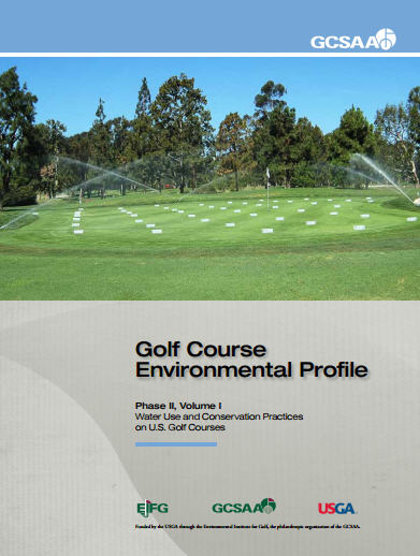 In 2013 Golf Course Superintendents used 21.8% less water overall and just 1.44% of all irrigated water in the U.S. to maintain their courses in 2013, compared with usage in 2005, according to recently released survey data.
In 2013 Golf Course Superintendents used 21.8% less water overall and just 1.44% of all irrigated water in the U.S. to maintain their courses in 2013, compared with usage in 2005, according to recently released survey data.
The survey was conducted by the Golf Course Superintendents Association of America (GCSAA) and funded by the United State Golf Association (USGA) through GCSAA’s Environmental Institute for Golf (EIFG).
The survey results from nearly 2,000 golf course superintendents were collected and independently analysed by scientists at PACE Turf and the National Golf Foundation (NGF), which published the findings for peer review before making the information public.
“This study shows us that the golf industry has been addressing water issues for some time and is realizing positive results. The numbers show that golf course superintendents across the country have reduced water consumption,” said Wendy Gelernter, Ph.D., co-owner of PACE Turf, which has been providing data analysis for the golf industry for more than 25 years. “There is always room for improvement, however; and I think we will see even less water being used and fewer acres being irrigated in the years ahead.”
Along with reducing overall water usage by 500,000 acre-feet, golf course superintendents increased their use of recycled water by 33 percent over the last study. Both of those trends are positive for the industry, since golf courses are able to filter recycled water before it re-enters the ecosystem.
Golf Course Superintendents also have demonstrated water savings through turf reduction and improved technologies, such as computer-controlled targeted irrigation systems and sensors that measure soil moisture. Since 2005, golf courses have reduced managed irrigated turf by 14,430 acres, enough of a reduction to cover more than 100 golf courses. This reduction does not include golf course closures.
In addition, the study provides data on average water use in the seven different agronomic regions of the country, with water usage the lowest in the Northeast and the highest in the Southeast and Southwest – two regions that have year-round play and turf growth.
“The golf course superintendent profession is committed to science-based technologies and environmental stewardship,” said Rhett Evans, CEO of GCSAA. “We hope that this national study will demonstrate our commitment to efficient water management and inspire the industry to continue to lead in the future. In the end, water management is about providing playing conditions that satisfy the needs of golfers today without compromising the needs of the future.”
It’s not surprising to find water usage down and water costs up nationally for golf course managers. The picture of the golf industry has changed, and it will continue to evolve, even at the national championship level, where the world’s best players are seeing a shift from overall uniform green to firmer surfaces that receive less water.
Visit www.gcsaa.org to review the complete survey report.
Over the next two years, GCSAA will publish four additional national surveys in key areas related to golf course management as part of its Golf Course Environmental Profile. Each of those surveys is also being funded by the USGA through the EIFG.
EIFG www.eifg.org
Read more stories about Golf Management Topics and latest list of Most-read stories

